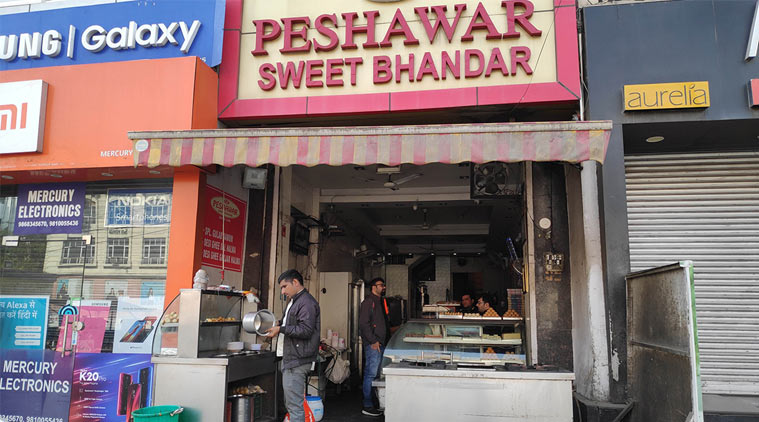 Cross-Border Flavours: The shop in Delhi’s Rajinder Nagar.
Cross-Border Flavours: The shop in Delhi’s Rajinder Nagar.
In the sea of refugees who flooded Delhi in 1947 was Chunni Lal Sahni, who had left behind his life in a Peshawar mansion that housed “15 to 20 families”. He settled in north Delhi’s Rajinder Nagar, along with his wife, son and two daughters. Since he had owned a sweetshop back home, he opened one here too. “It was a small set-up on the street back then; it wasn’t as big as it is now,” says Tarun Sahni, 34, third-generation owner of Peshawar Sweet Bhandar in Delhi’s Shankar Road market. Established in 1950, it turned 70 this year.
Besides the usual variety of sweets like laddoo, barfi, gulab jamun, Chunni Lal also sold puri-chhole and aam ka achaar as a breakfast dish, as well as snacks such as samosa and pakore. The shop soon became popular. “We have heard that the customers’ queue used to be so long that it went up till the traffic signal, which is a few yards away,” says Tarun, who has been running the shop with his cousin Saket, 30, for the last 10 years. After the founder’s death in 1998, his sons — Shyam Sundar and Ramesh Chandra — ran the shop until they passed away in 2016 and 2009, respectively. Chunni Lal’s third son Subash Chandra, 60, still helps with the business.
Apart from the puri-chhole (without garlic and onion) that is still served, the shop is famous for its gulab jamun. “It’s our grandfather’s recipe, and old customers, who have moved to Gurgaon or Vasant Kunj, still come here for it,” says Tarun. The Sahnis’ recipe uses paneer, not the usual khoya. The achaar served with the puri-chhole is also Chunni Lal’s recipe. “It is so popular that people come to the shop especially for the achaar,” says Tarun. While, in the morning, the puri-chhole breakfast is the main attraction, in the evenings the tikki-chole is the crowd puller.
Over the years, the Sahnis have tried to recreate many of Chunni Lal’s Peshawar recipes. “He made bhey (lotus stem) ke pakore, we started that here, too, but people didn’t like them, so we stopped,” says Tarun. They also tried to make the chutney that he used to serve with samosas, but didn’t succeed. “He added fruits like pomegranate and chikoo, along with mint, coriander and ginger to make the chutney. But he didn’t leave or pass on a recipe, so we could not get it right,” he says.
At Peshawar Sweet Bhandar, different festivals call for different sweets. The calendar starts with Lohri in January, when the Sahnis make khajoor, a cookie-like sweet, resembling a date, made of maida, sooji and sugar. For Holi, it’s traditional gujiyas, and for Dussehra, thicker-than-usual jalebis called ghaer. On Diwali, an array of sweets is added to the menu, including kheer mohan and gulab jamun filled with rabri. Gajar ka halwa and dal ka halwa in winters. “For our version of dal ka halwa, we mix moong and urad,” he says, adding, “We had started a restaurant on the upper floor which was closed during sealing four years ago. But we hope to re-start it soon.”